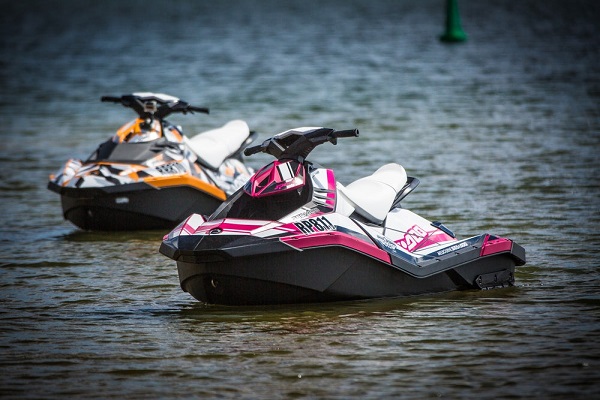The history of watercraft goes back to the year 1973, Clayton Jacobsen II, invented the first water vehicle and motor. In 1976, the Kawasaki company began the mass production of this model, which it named JS400-A, which included a two-stroke 400cc engine. In 1976 he expanded the offer with a model of 650 cc, called X-2. Until then they were motorcycles with capacity for a standing person. However, in 1980, the first water bikes were built for two seated people, which allowed for more comfort, safety and stability, as well as being easier to drive. These are called sit-down. Since the early 90’s, it has improved in technology, price and development, becoming the most sold boat in the world. Already in 1994, Kawasaki premiered the 750 XI R, a line model prepared for competition. Today not only does this company offer jet skis, but others such as Yamaha, Bombardier and Polaris have joined together, making it a worldwide sport.
According to the capacity we can find single-seater motorcycles, the famous Jet Ski or bi-squares, tri-squares and even quadriplaza. While the name Jet Ski was the brand of the first watercraft invented by the Kawasaki company, the term has become a common name used for any type of stand-up watercraft.
Therefore we can differentiate a jet ski from a Jet Ski, in which the first is wider and longer which means it is more stable. It has a smaller turbine power, it is driven sitting which facilitates the mastery of the motorcycle and can go up to four people.
For its part, the main characteristic of a Jet Ski is that the pilot, is a single-seater, navigates standing up and can not remain on top if the motorcycle is stopped. The relative power of the turbine is much greater than that of the watercraft. The domain is more difficult, since you have to achieve balance while accelerating. Normally, you learn on your knees until you master the jet ski.
We can find jet skis in several places, for example beaches, rivers, water parks, oceans, lagoons. Although the waves give them a better experience, the lakes, rivers and lagoons are also a good experience for both recreation and competition.
Although the province of Mendoza is characterized by its desert areas, the landscape and nature has been very kind due to the great presence of dams, reservoirs and rivers that allow the development of sports activities in the water. The mountains and valleys that surround their water mirrors, make Mendoza an unbeatable place for lovers of water sports






